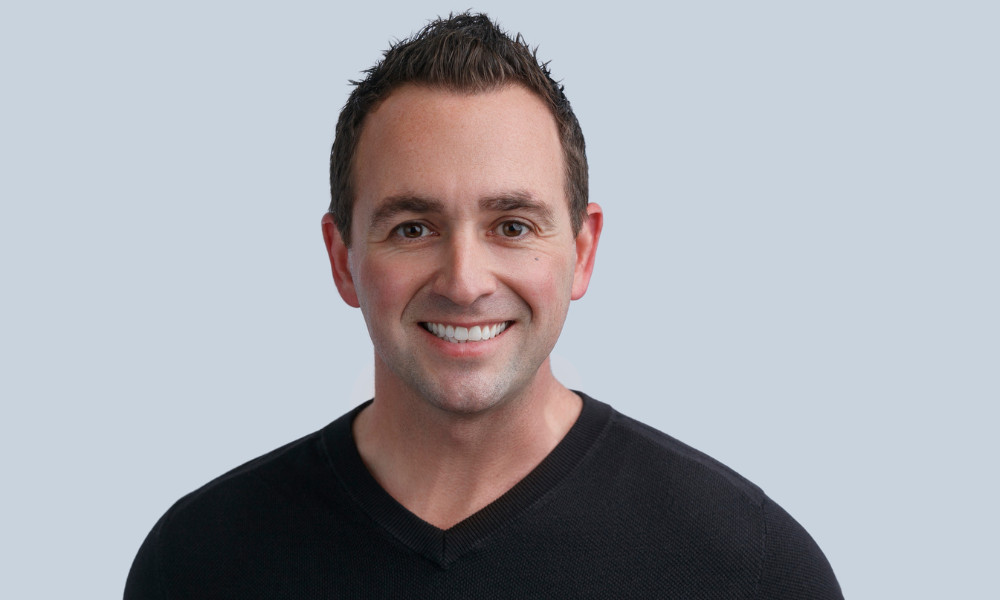CEO details market forces that have helped his firm gain traction

While the Fed’s tinkering with interest rate hikes may seem to some as nothing more than abstract economic alchemy meant to ward off inflation, such actions have a deep-seated and direct impact.
Mortgage Professional America turned to Michael Gifford (pictured), CEO and co-founder of San Diego, Calif.-based Splitero, for insight on the likely effects of the Fed’s actions. What consumer type will the hikes affect the most? What’s the impact on mortgage rates? Will the increases slow down HELOC activity?
Answering such questions like a man who’s comfortable in rolling with the economic punches – he and COO David Zvaifler founded Splitero in July 2021 – Gifford is in the business of home equity. He described his company’s mission as one helping homeowners access the equity in their homes without additional debt or new monthly payments.
“We help access that equity through home equity investment,” he said during a telephone interview with MPA. “They can get some cash, and we share in the appreciation of their home for 30 years. And it’s paid off whenever they want.”
Who will rate hikes impact the most?
From that corporate perspective, Gifford said he expected the hike impact to primarily affect entry-level buyers and homeowners seeking to refinance or cash-out refinance. “I expect the rise in interest rates to most impact entry-level buyers, stretch or reach buyers that are pushing their limits, and all homeowners looking to refinance or cash-out refinance,” he said.
Fed rate hikes impact mortgage rates given that banking institutions are charged higher fees as a result, passing those costs to consumers – primarily through mortgages, he explained. “It’s not direct, but oftentimes it correlates to mortgage rates.”
Learn the different types of refinancing in mortgage industry.
Living in unprecedented times
He acknowledged the anxiety resulting from the Fed’s actions in virtually raising rates each week at varying degrees. But he suggested the times in which we live are unusual, and an aggressive approach was needed to curb inflation – down to around 3% from a high of about 9% last summer, but still higher than the 2% goal.
“We’re living in unprecedented times,” Gifford said. “The Fed has raised rates faster than they ever have in history. They have – really since the great foreclosure crisis – used quantitative easing on three different occasions to pump a lot of money into the economy, which is still out there moving, floating, buying.”
Bolstered equity is a direct result of those actions, he noted: “Asset values have increased, which is a lot of that equity that these homeowners have built up. The Fed is doing what it can, which is increasing the cost of money to suck that back out into the economy so that asset prices and any sort of bubbles will either burst or at least come down to a more normalized environment.”
But that scenario won’t emerge overnight, as many of his clients understand: “We are working with homeowners now that have canceled their refinances and HELOC applications due to significant pricing changes and long-funding timeframes,” he said.
Indeed, rate hikes will spur along a decline in the HELOC realm, he said. “For years, HELOC activity has been declining and rate hikes will only accelerate that trend,” he said. As a result of the Fed’s moves, he explained, banks originating HELOCs have gradually constrained their lending criteria - thus making for a stricter qualification process.
“Income, debt-to-income ratios and credit score requirements have increased dramatically from a few years ago,” he noted. “Alternative products have emerged to serve those that financial institutions are leaving behind.”
That stuff about any rate-hike-spurred changes taking a while to bake into the economy is being felt by would-be homeowners – arguably the group bearing the fullest brunt of economic uncertainty. “Predicting housing stock availability in your area, home prices, interest rates, borrowing qualifications, and physically moving is becoming harder and more uncertain,” he said. “Unfortunately, homebuyers are facing headwinds on multiple fronts with little reprieve in sight.”
The nascent company’s steady growth may reflect consumers’ search for alternative products to circumvent shifts in the economic landscape. Gifford said Splitero has expanded into four additional states since it California launch, now also serving clients in Colorado, Oregon, Utah and Washington.
Want to make your inbox flourish with mortgage-focused news content? Get exclusive interviews, breaking news, industry events in your inbox, and always be the first to know by subscribing to our FREE daily newsletter.



